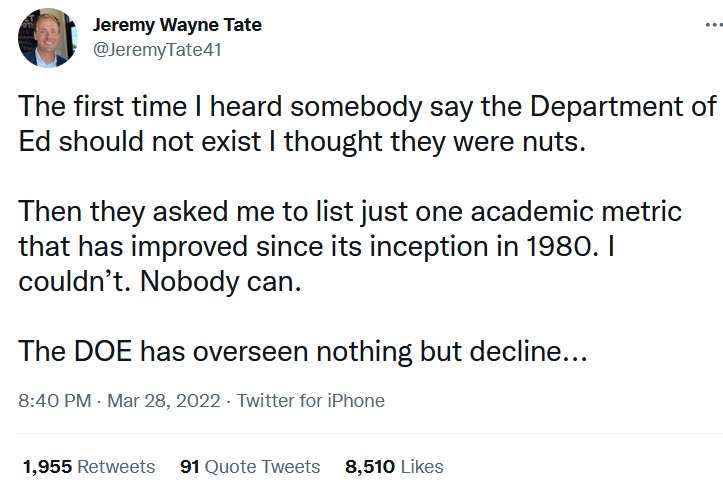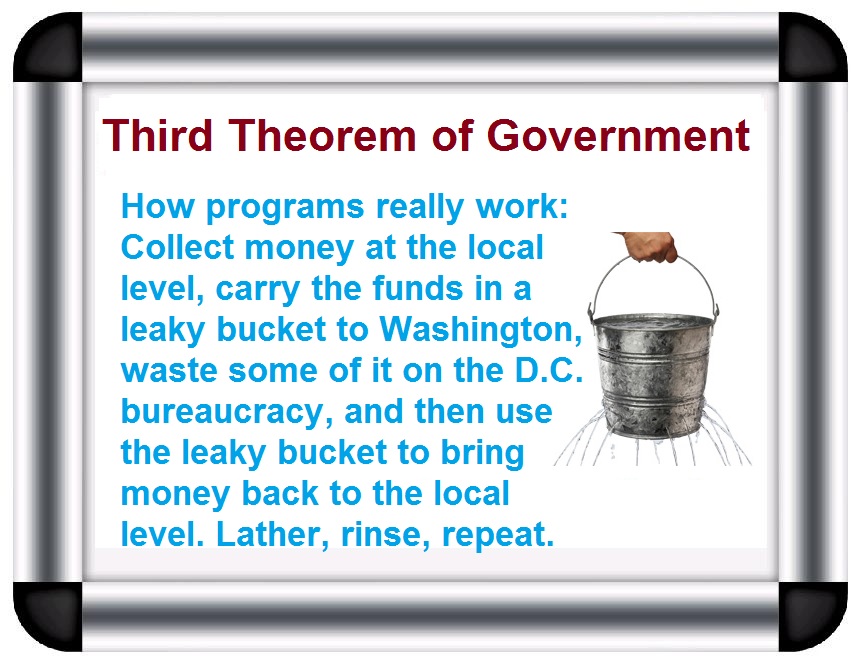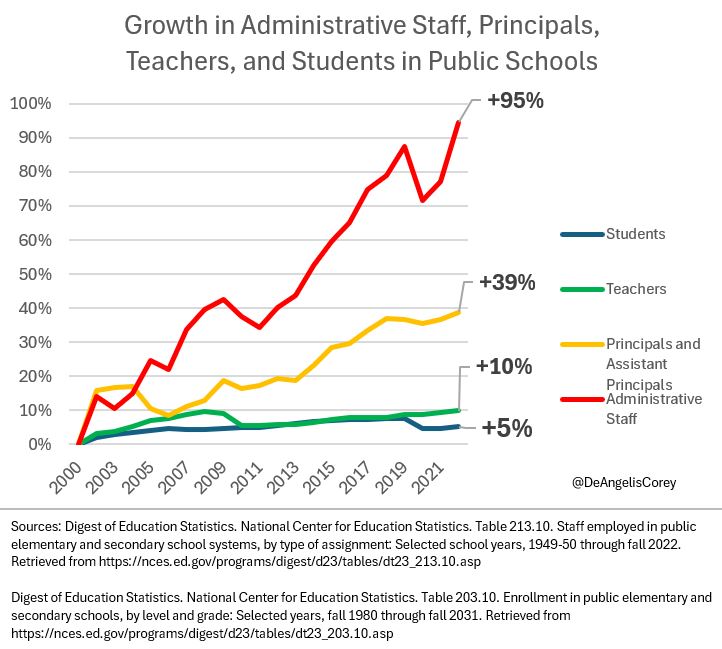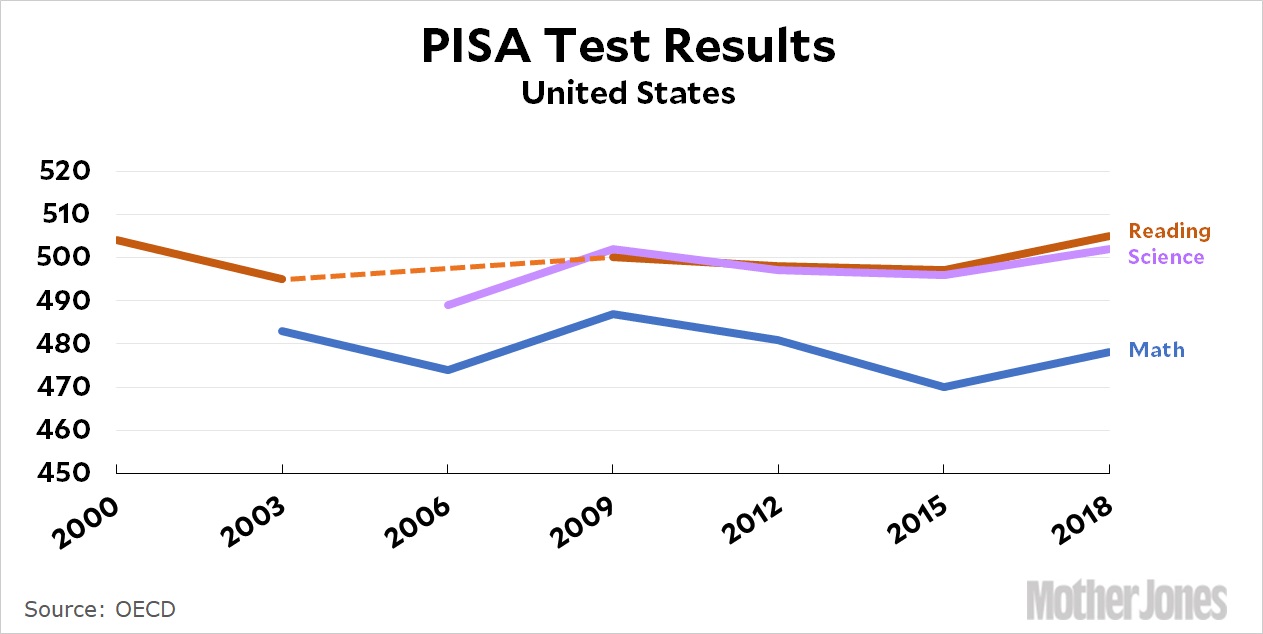Today’s column is about shutting down the Department of Education. But I’m not going to explain why that should happen since I have already done that (once in 2015 and twice (here and here) in 2022).
Instead I’m going to explain how it should happen. Let’s begin by looking at where things stand in Washington. As reported by Laura Meckler of the Washington Post, President Trump is seeking to eliminate the department and just issued an executive order to facilitate that long-overdue goal.
Here are some excerpts.
President Donald Trump is set to sign a much-anticipated executive order Thursday aimed at closing the Education Department, the White House said, though administration officials have acknowledged that shuttering the agency would require congressional approval. …the executive order will direct Education Secretary Linda McMahon to “take all necessary steps” to facilitate the closure of the department “and return education authority to the States.” …Already, the agency has reduced its workforce by nearly half, mostly through layoffs, and worked to cancel dozens of grants and contracts. …The executive order also will repeat the administration’s directive that no program that advances diversity, equity and inclusion (DEI) or “gender ideology” receive Education Department funding.
That’s the good news.
The bad news is that Trump and his Secretary of Education, Linda McMahon, apparently have no intention of actually reducing federal government spending and intervention.
McMahon suggested moving some functions to other government agencies, a decision experts say would also require congressional approval. …McMahon suggested moving some functions to other government agencies, a decision experts say would also require congressional approval. …The Education Department administers federal grant programs, including the $18.4 billion Title I program that provides supplemental funding to high-poverty K-12 schools, as well as the $15.5 billion IDEA program that helps cover the cost of education for students with disabilities. And the department oversees the $1.6 trillion federal student loan program… A senior administration official said Wednesday that these programs, which make up the bulk of the Education Department’s budget and work, “will NOT be touched.”
|
|
All of which is grimly depicted by the Third Theorem of Government.
At the risk of understatement, I’m underwhelmed. This is not as disappointing as Trump’s decision to stick his head in the sand about America’s entitlement crisis, but it’s yet another piece of evidence that America needs a return to Reaganism.
The Education Racket, March 16, 2025
It’s not quite the “Chart of the Century,” which captures the perverse impact of government intervention, but Andrew Coulson’s chart on government schools is one of the most powerful visuals I’ve ever seen.
Unfortunately, he passed away about 10 years ago, so there is not an up-to-date version.
But there’s now a close substitute. Corey DeAngelis of the Education Freedom Institute recently shared this comparison.
As you can see, there’s been almost no growth in the number of students or the number of teachers over the past twenty-plus years.
But there’s been a giant increase in the number of education bureaucrats.
The only thing missing from Corey’s chart is a line (or lines) showing test scores. This is important information because some people might want to argue that more bureaucrats somehow leads to better results.
But this data from Kevin Drum shows that is not the case.
My suggestion to Corey is that he augment his chart so that people can see that more bureaucrats don’t help students.
By the way, school closures during the pandemic hurt test scores, so the above chart would look much worse if it included the latest numbers.
The bottom line is that government schools cost far too much and deliver very weak outcomes. One obvious conclusion is that government schools are for the benefit of insiders, not students. Which was the message from my 1st Theorem of Government.
P.S. Shutdowns are another reason to “thank” teacher unions and left-leaning politicians.
P.P.S. I have recently shared data on school spending and educational outcomes from America’s worst city and America’s best state.




No comments:
Post a Comment